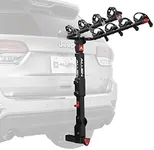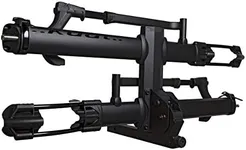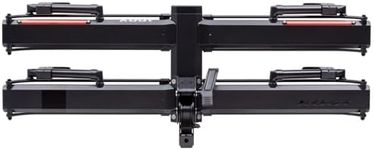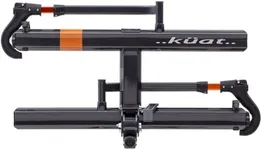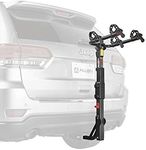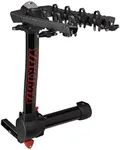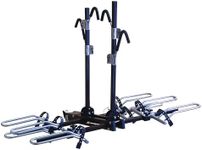Buying Guide for the Best Budget Hitch Bike Rack
Choosing a hitch bike rack can make transporting your bikes much easier and safer. The right rack will depend on your vehicle, the number of bikes you want to carry, and how often you plan to use it. It's important to consider how easy the rack is to install and use, how securely it holds your bikes, and whether it fits your car's hitch receiver. By understanding the key features, you can find a rack that matches your needs and makes your biking adventures more convenient.Hitch Receiver Size CompatibilityThe hitch receiver size refers to the opening on your vehicle where the bike rack attaches. The most common sizes are 1.25-inch and 2-inch receivers. This is important because a rack that doesn't fit your hitch receiver simply won't work. Smaller cars often have 1.25-inch receivers, while larger vehicles like SUVs and trucks usually have 2-inch receivers. Before buying, check your vehicle's hitch size and make sure the rack is compatible. If you plan to use the rack on multiple vehicles, consider which receiver sizes you need to accommodate.
Bike CapacityBike capacity tells you how many bikes the rack can carry at once. This is crucial if you often ride with family or friends. Racks typically hold between two and five bikes. If you usually ride solo or with one other person, a two-bike rack is enough. For families or groups, look for racks that can hold more bikes. Remember, carrying more bikes can make the rack heavier and harder to handle, so choose a capacity that matches your regular needs.
Mounting Style (Platform vs. Hanging)Mounting style describes how the bikes are held on the rack. Platform racks support bikes by their wheels, making them stable and easy to load, especially for heavier or oddly shaped bikes. Hanging racks support bikes by their frames, which can be lighter and less expensive, but may not fit all bike types (like some women's or kids' bikes) as easily. If you have a variety of bike styles or want the easiest loading, a platform rack is a good choice. If you want something lighter and simpler, a hanging rack might work better.
Ease of Installation and UseThis refers to how simple it is to attach the rack to your vehicle and load your bikes. Some racks require tools and more effort to install, while others have quick-release systems or tool-free installation. If you plan to take the rack on and off frequently, look for one that's easy to handle. Also, consider how easy it is to load and unload your bikes, especially if you have heavier bikes or will be doing it alone.
Security FeaturesSecurity features include locks for the rack itself and for the bikes. These help prevent theft when your vehicle is parked. Some racks come with built-in locks, while others require you to buy them separately. If you often leave your bikes unattended on the rack, look for models with integrated locking systems for peace of mind.
Rack Weight and StorageThe weight of the rack affects how easy it is to install, remove, and store when not in use. Heavier racks can be more stable but harder to handle, while lighter racks are easier to move but may not feel as sturdy. Also, consider if the rack folds up for easier storage in your garage or trunk. If you have limited storage space or will be moving the rack often, a lighter, foldable design is helpful.



